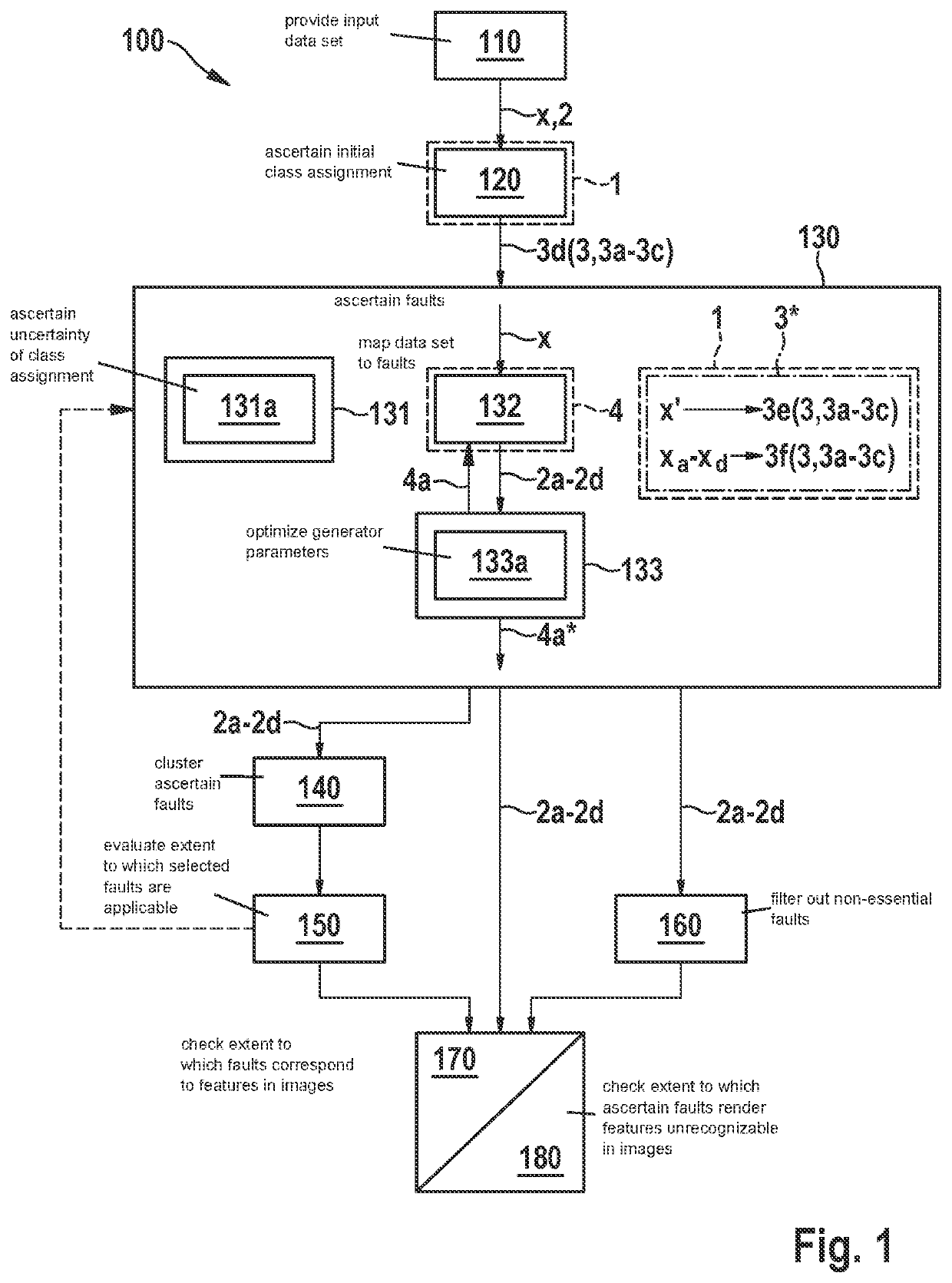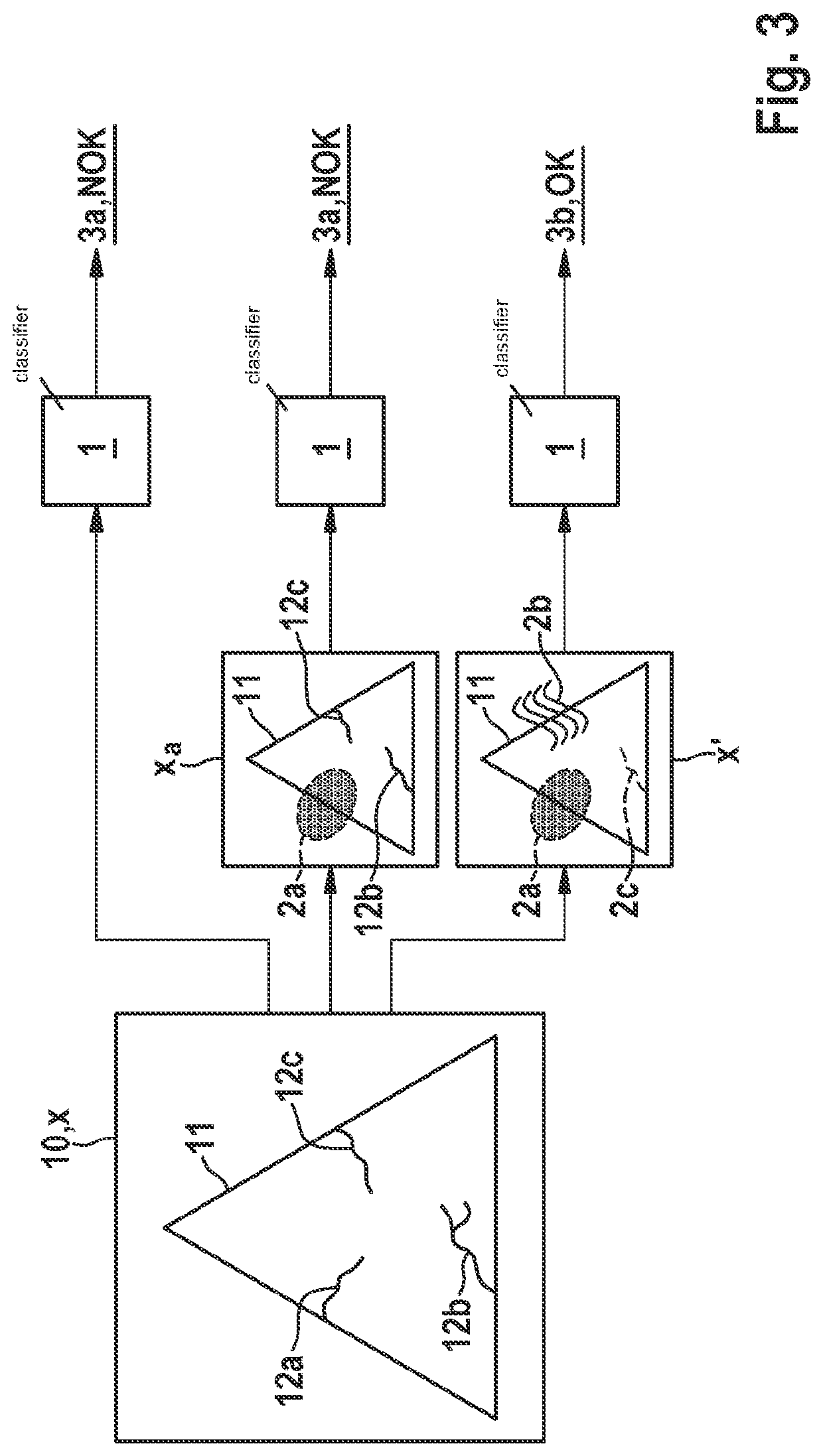Measurement of the sensitivity of classifiers based on interacting faults
a classifier and sensitivity technology, applied in the field of controlling the behavior of trainable classifiers, can solve the problems of insufficient practical classification as smugglers or non-smugglers, no single criterion is sufficient for a practical classification, and the time spent on a closer examination of luggage or even an x-ray examination of travelers often pays off. , to achieve the effect of less computing power
- Summary
- Abstract
- Description
- Claims
- Application Information
AI Technical Summary
Benefits of technology
Problems solved by technology
Method used
Image
Examples
Embodiment Construction
[0058]FIG. 1 shows a schematic flowchart of an exemplary embodiment of method 100. In step 110, at least one input data set x, including image data 2, is provided. In step 120, an initial class assignment 3d to one or multiple classes 3a through 3c of a predefined classification 3 is ascertained for the at least one input data set x with the aid of classifier 1.
[0059]In step 130, faults 2a through 2d are ascertained, based on objectives, in that[0060]a modification x′ of input data set x formed by the joint application of all of these faults 2a through 2d is mapped by classifier 1 to a class assignment 3e which differs from initial class assignment 3d according to a predefined criterion 3*; while[0061]a modification xa, xb, xc, xd of input data set x formed by applying only one of these faults 2a through 2d is mapped by classifier 1 to a class assignment 3f which corresponds to initial class assignment 3d according to predefined criterion 3*.
[0062]Original input data set x, on the o...
PUM
 Login to View More
Login to View More Abstract
Description
Claims
Application Information
 Login to View More
Login to View More - R&D
- Intellectual Property
- Life Sciences
- Materials
- Tech Scout
- Unparalleled Data Quality
- Higher Quality Content
- 60% Fewer Hallucinations
Browse by: Latest US Patents, China's latest patents, Technical Efficacy Thesaurus, Application Domain, Technology Topic, Popular Technical Reports.
© 2025 PatSnap. All rights reserved.Legal|Privacy policy|Modern Slavery Act Transparency Statement|Sitemap|About US| Contact US: help@patsnap.com



